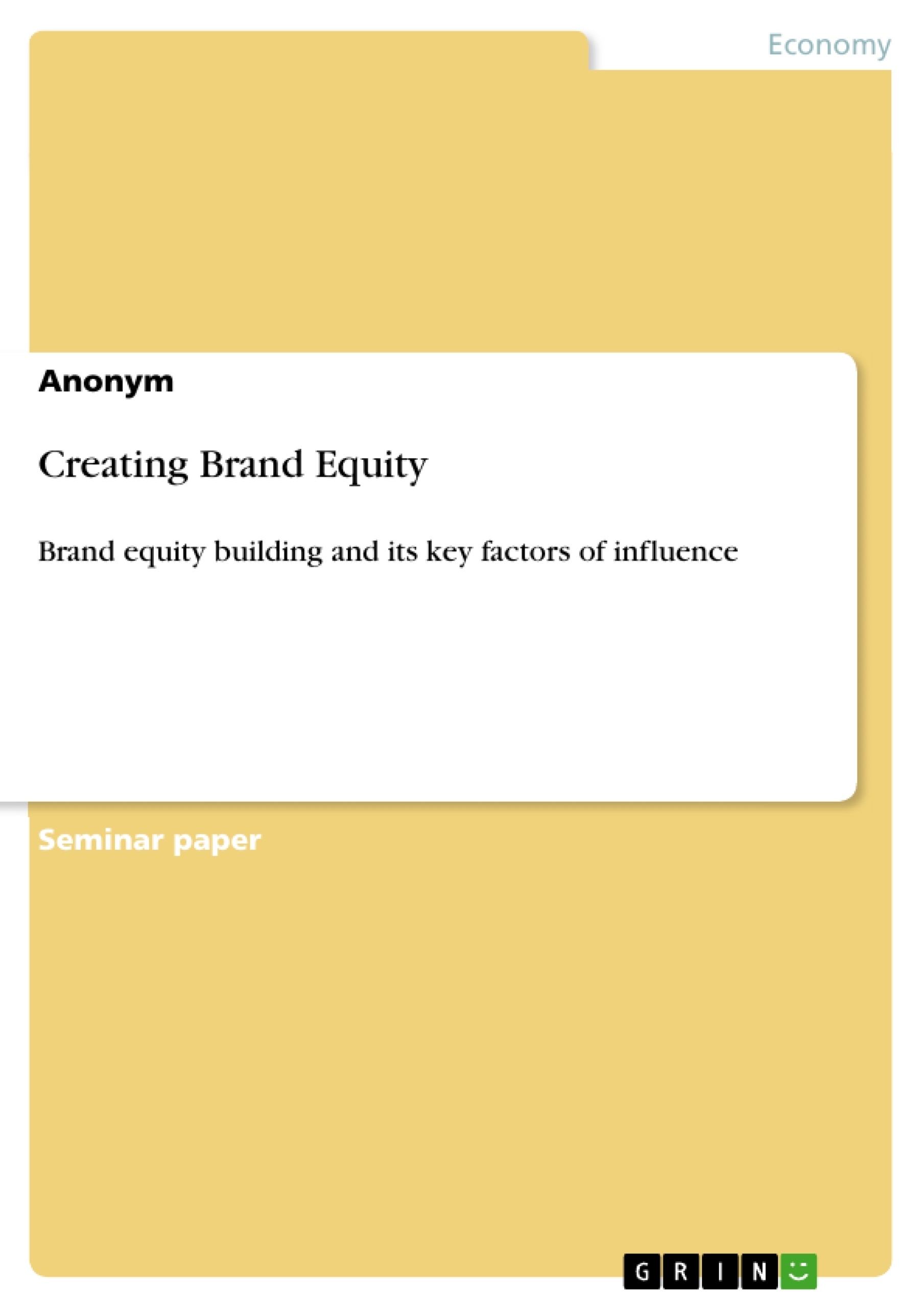In a global world where countless functionally similar products are offered, there must be a suitable reference point by which the success of a company can be defined - the brand equity. The following work therefore aims to provide a comprehensive overview of brand equity and its creation, measurement and maintenance.
1989 California - This year saw the start of an eight-year experiment in the USA, in which an identical compact car was sold under two different brands: the Toyota Corolla and the Chevrolet Prizm. The Toyota Corolla was launched several years earlier and had already gained the trust of many consumers in terms of quality, thus benefiting from a positive brand equity. The Chevrolet Prizm, on the other hand, was a completely new name for consumers in the compact car class. Despite the same technical characteristics of both vehicles, the Prizm was consistently rated worse and the price of the car was also lower than the one of the Toyota Corolla. What does the experiment demonstrate?
Inhaltsverzeichnis (Table of Contents)
- 1 Introduction
- 2 Creating Brand Equity
- 2.1 The beginnings of Brands and Branding
- 2.2 Defining Brand Equity and its Perspectives
- 2.3 Building strong Brand Equity
- 2.3.1 The CBBE Model
- 2.3.1.1 The four steps of the CBBE Model
- 2.3.1.2 Example: Starbucks - The protagonist of the coffee culture
- 2.3.1 The CBBE Model
- 2.4 Brand equity building and its key factors of influence
- 2.4.1 Brand Elements
- 2.4.2 Secondary Brand Associations
- 2.4.2.1 Co-branding
- 2.4.3 Marketing communication
- 2.5 Measuring Brand Equity
- 2.6 Maintaining Brand Equity
- 3 Conclusion
Zielsetzung und Themenschwerpunkte (Objectives and Key Themes)
This paper aims to provide a comprehensive overview of brand equity, encompassing its creation, measurement, and maintenance. It explores the historical development of branding and delves into key models and factors influencing brand equity building.
- The historical evolution of brands and branding.
- Defining brand equity and its various perspectives.
- Key factors influencing brand equity building, including brand elements and marketing communication.
- Methods for measuring brand equity.
- Strategies for maintaining brand equity over time.
Zusammenfassung der Kapitel (Chapter Summaries)
1 Introduction: This introductory chapter sets the stage by highlighting the significance of brand equity in a global marketplace saturated with functionally similar products. Using the example of the Toyota Corolla and Chevrolet Prizm, the chapter emphasizes the crucial role of brand equity in differentiating products and influencing consumer perception, ultimately impacting pricing and market success. The chapter establishes the paper's objective: to provide a thorough understanding of brand equity and its management.
2 Creating Brand Equity: This chapter delves into the core concept of brand equity, beginning with an exploration of the term "brand" itself and its historical evolution from medieval guild trademarks to the significant economic assets they represent today. The chapter examines various perspectives on brand equity and presents a detailed analysis of building strong brand equity. This includes a deep dive into the Customer-Based Brand Equity (CBBE) model, its four key steps, and a practical example using Starbucks as a case study to illustrate the successful application of these principles. Furthermore, it discusses key factors influencing brand equity, such as brand elements, secondary brand associations (including co-branding), and the importance of effective marketing communication in shaping brand perception and fostering customer loyalty.
Schlüsselwörter (Keywords)
Brand equity, branding, brand building, marketing communication, CBBE model, brand elements, secondary brand associations, co-branding, brand measurement, brand maintenance.
Frequently Asked Questions: A Comprehensive Language Preview on Brand Equity
What is the purpose of this document?
This document provides a comprehensive overview of brand equity, covering its creation, measurement, and maintenance. It explores the historical development of branding and examines key models and factors influencing brand equity building.
What topics are covered in this document?
The document covers the historical evolution of brands and branding, defining brand equity from various perspectives, key factors influencing brand equity (including brand elements and marketing communication), methods for measuring brand equity, and strategies for maintaining brand equity over time. A significant portion focuses on the Customer-Based Brand Equity (CBBE) model, using Starbucks as a case study.
What is the structure of the document?
The document is structured with an introduction, a main section on creating brand equity, and a conclusion. The "Creating Brand Equity" section is further divided into subsections covering the historical development of brands, defining brand equity, building strong brand equity (including the CBBE model and a Starbucks case study), key influencing factors (brand elements, secondary brand associations, and marketing communication), measuring brand equity, and maintaining brand equity. A table of contents, objectives and key themes, chapter summaries, and keywords are also included.
What is the Customer-Based Brand Equity (CBBE) model, and how is it discussed?
The CBBE model is a key framework discussed in detail. The document explains the four steps of the CBBE model and illustrates its application through a case study of Starbucks, showcasing how the company successfully built strong brand equity.
What examples are used to illustrate key concepts?
The document uses several examples. The Toyota Corolla and Chevrolet Prizm are used to highlight the importance of brand equity in differentiating products. Starbucks serves as a detailed case study to illustrate the application of the CBBE model and successful brand equity building.
What are the key factors influencing brand equity building?
Key factors influencing brand equity building discussed include brand elements, secondary brand associations (including co-branding), and effective marketing communication.
How is brand equity measured and maintained?
The document addresses methods for measuring brand equity and provides strategies for maintaining brand equity over time, although specific techniques aren't detailed extensively.
What are the keywords associated with this document?
Keywords include: Brand equity, branding, brand building, marketing communication, CBBE model, brand elements, secondary brand associations, co-branding, brand measurement, brand maintenance.
- Quote paper
- Anonym (Author), 2020, Creating Brand Equity, Munich, GRIN Verlag, https://www.grin.com/document/1040326



